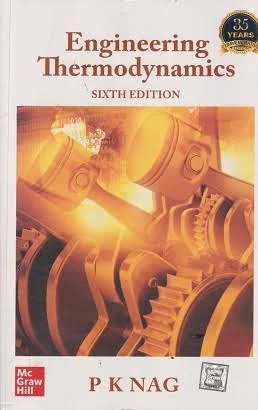Engineering Thermodynamics 3rd Edition by Nag P K
is a highly regarded textbook that offers a comprehensive guide to thermodynamic principles, ideal for both students and professionals. The book covers essential topics such as the laws of thermodynamics, energy conservation, and entropy. Nag P K explains these concepts in a clear, structured manner, making it accessible to beginners while still providing in-depth material for advanced learners.
In this edition, Engineering Thermodynamics 3rd Edition by Nag P K expands its coverage to include detailed examples and problem-solving techniques that help readers apply theoretical knowledge to real-world scenarios. The book explores a range of thermodynamic systems, including open and closed systems, and discusses the behavior of gases and liquids in various thermodynamic states. Additionally, it delves into important cycles like Carnot and Rankine cycles, illustrating their practical applications.
One of the book’s notable strengths is its detailed approach to advanced thermodynamic concepts such as gas mixtures, thermodynamic potentials, and exergy analysis. These sections make the book a valuable resource not only for undergraduate students but also for postgraduate students and professionals in the field of engineering.
Engineering Thermodynamics 3rd Edition by Nag P K provides a balanced combination of theory, application, and problem-solving, ensuring readers develop a solid understanding of thermodynamics that they can use in engineering fields like power generation, refrigeration, and HVAC systems.









